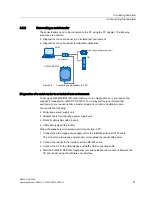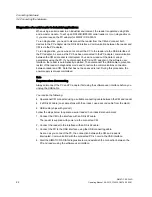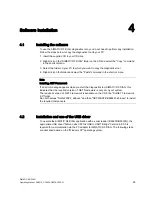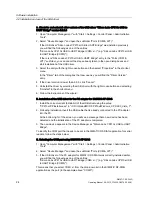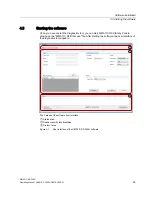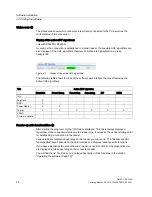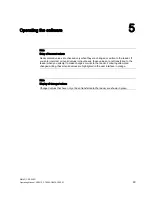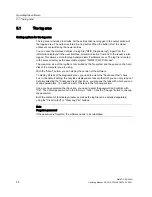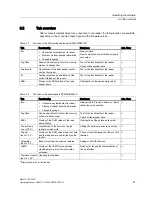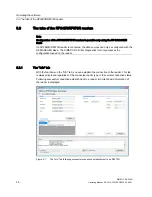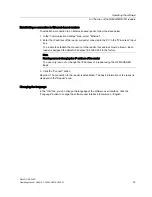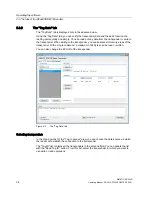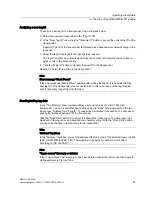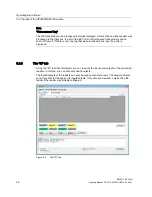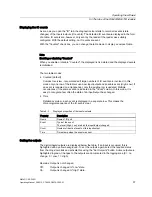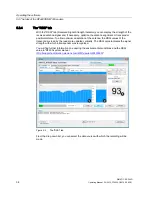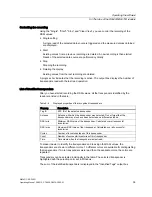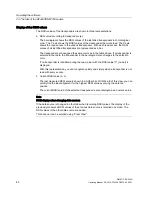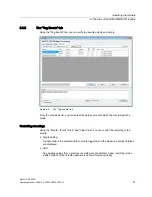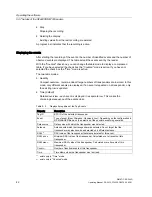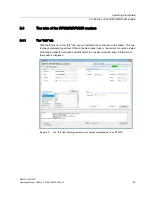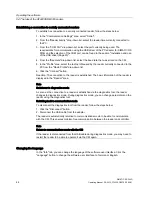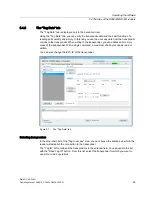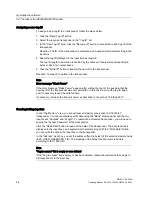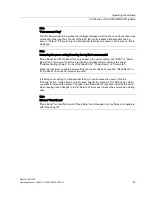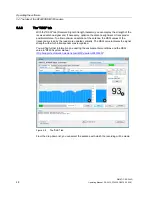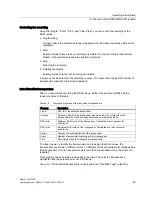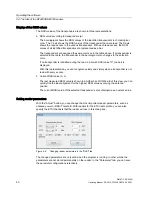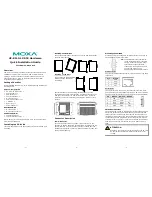
Operating the software
5.3 The tabs of the RF640R/RF670R readers
SIMATIC RF-DIAG
Operating Manual, 09/2012, C79000-G8976-C292-01
35
Assigning a new tag ID
To assign a new tag ID to a transponder, follow the steps below:
1.
Select the required transponder in the "Tag ID" list.
2.
In the "New Tag-ID" area, click the "Resume ID" button to accept the current tag ID of the
transponder.
Reaction: The ID of the transponder is displayed as a hexadecimal character string in the
input box.
3.
Adapt the tag ID displayed in the input field as required.
The tag ID length to be written is decided by the number of characters and specified in
bytes or bits in two output boxes.
4.
Click the "Write ID" button to transfer the new ID to the transponder.
Reaction: The tag ID is written to the transponder.
Note
Error message "Weak Power"
If the error message "Weak Power" appears after writing the tag ID, it is possible that the
new tag ID of the transponder was not overwritten. In this case read out the tag ID again
and, if necessary repeat the write function.
Reading/writing tag data
In the "Tag Memory" area, you can address all memory areas of an ISO 18000-6C
transponder. You can read/write specific data using the "Bank" drop-down list and the two
input boxes "Address" and "Length". To read/write a protected transponder, you will need to
specify the "Access Password" of the transponder.
Click the "Read Data" button to read out the data of the transponder. The data read out is
displayed in the input box as a hexadecimal character string. With the "Write Data" button,
you can write the data in the input box to the transponder.
Note
"Address" input box
In the "Address" input box, you set the address offset (in bytes) of the selected memory bank
(EPC, USER, RESERVED, TID). The meaning of the bytes for each memory bank is
according to ISO 18000-6C.
Note
"Tag to access" list empty or deleted
If the "Tag to access" list is empty or has been deleted, read/write commands then apply to
all transponders in the input box.

